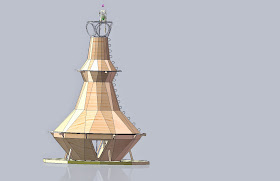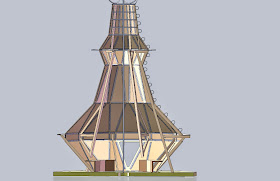Here's my latest tutorial, the Sweetheart Pendant in two sizes!
The Sweetheart Pendant is woven with beaded cubic right angle weave and its variations. This tutorial does not contain complete step-by-step instructions for weaving these hearts. Instead, This tutorial is designed for experienced beaders, and it includes charts like those I wrote about last week. This tutorial assumes you already how to do basic cubic right angle weave and know how to connect two ends to make a continuous strip. If you don’t, check out the links at my blog post above to learn how.
The tutorial is 6 pages, including about 30 illustrations and photographs. The tutorial is a PDF file that gives charts and explanations for reading the charts to make Sweetheart pendants in two sizes.
Thanks for looking!
The Sweetheart Pendant is woven with beaded cubic right angle weave and its variations. This tutorial does not contain complete step-by-step instructions for weaving these hearts. Instead, This tutorial is designed for experienced beaders, and it includes charts like those I wrote about last week. This tutorial assumes you already how to do basic cubic right angle weave and know how to connect two ends to make a continuous strip. If you don’t, check out the links at my blog post above to learn how.
The tutorial is 6 pages, including about 30 illustrations and photographs. The tutorial is a PDF file that gives charts and explanations for reading the charts to make Sweetheart pendants in two sizes.
Thanks for looking!





















































